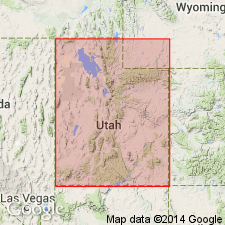
- Usage in publication:
-
- Antimony Tuff Member*
- Modifications:
-
- Named
- Dominant lithology:
-
- Tuff
- AAPG geologic province:
-
- Paradox basin
- Wasatch uplift
Summary:
Named as a member of Mount Dutton Formation for the town of Antimony, Garfield Co, UT in the Paradox basin. Type section is in sec 29, T30S, R2W, at east end of Kingston Canyon, Piute Co, UT on the Wasatch uplift. Is about 20 m thick at its type where it is underlain and overlain by volcanic breccia member of the Mount Dutton. Is made up of resistant, medium-brown, plagioclase-sanidine vitric welded tuff with conspicuous dark-red lenticules and a black basal vitrophyre. Is recognized on the south Sevier Plateau. May be present farther east. Of Miocene age. Correlation chart; fence diagram; measured sections.
Source: GNU records (USGS DDS-6; Denver GNULEX).
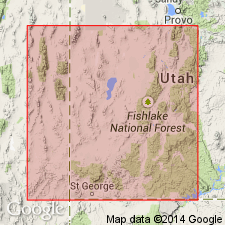
- Usage in publication:
-
- Antimony Tuff Member*
- Modifications:
-
- Overview
- AAPG geologic province:
-
- Wasatch uplift
Summary:
Antimony Tuff Member of the Mount Dutton Formation is discussed in the context of regional stratigraphy.
Source: GNU records (USGS DDS-6; Menlo GNULEX).
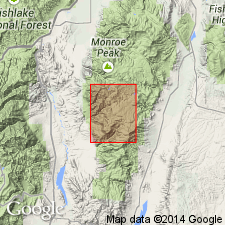
- Usage in publication:
-
- Antimony Tuff Member*
- Modifications:
-
- Age modified
- AAPG geologic province:
-
- Wasatch uplift
Summary:
Age of Antimony and Kingston Canyon Tuff Members of Mount Dutton Formation changed from Miocene to Oligocene. Age modification based not on new information but on use of 24 m.y. as the Miocene-Oligocene boundary. The underlying Kingston Canyon Tuff Member has a K-Ar age of 26-25 m.y. Mapped area is on the Wasatch uplift.
Source: GNU records (USGS DDS-6; Denver GNULEX).
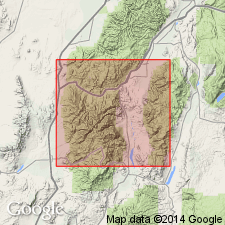
- Usage in publication:
-
- Antimony Tuff Member*
- Modifications:
-
- Geochronologic dating
- AAPG geologic province:
-
- Wasatch uplift
Summary:
Has a K-Ar age of 25.4 m.y. on the Wasatch uplift.
Source: GNU records (USGS DDS-6; Denver GNULEX).
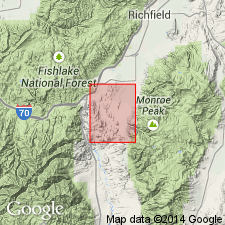
- Usage in publication:
-
- Antimony Tuff Member*
- Modifications:
-
- Geochronologic dating
- AAPG geologic province:
-
- Wasatch uplift
Summary:
Has a K-Ar age of 25.4 m.y., or Oligocene, on the Wasatch uplift. Resembles the informal tuff of Albinus Canyon but is dissimilar petrographically; the two were probably derived from the same source area.
Source: GNU records (USGS DDS-6; Denver GNULEX).
For more information, please contact Nancy Stamm, Geologic Names Committee Secretary.
Asterisk (*) indicates published by U.S. Geological Survey authors.
"No current usage" (†) implies that a name has been abandoned or has fallen into disuse. Former usage and, if known, replacement name given in parentheses ( ).
Slash (/) indicates name conflicts with nomenclatural guidelines (CSN, 1933; ACSN, 1961, 1970; NACSN, 1983, 2005, 2021). May be explained within brackets ([ ]).

